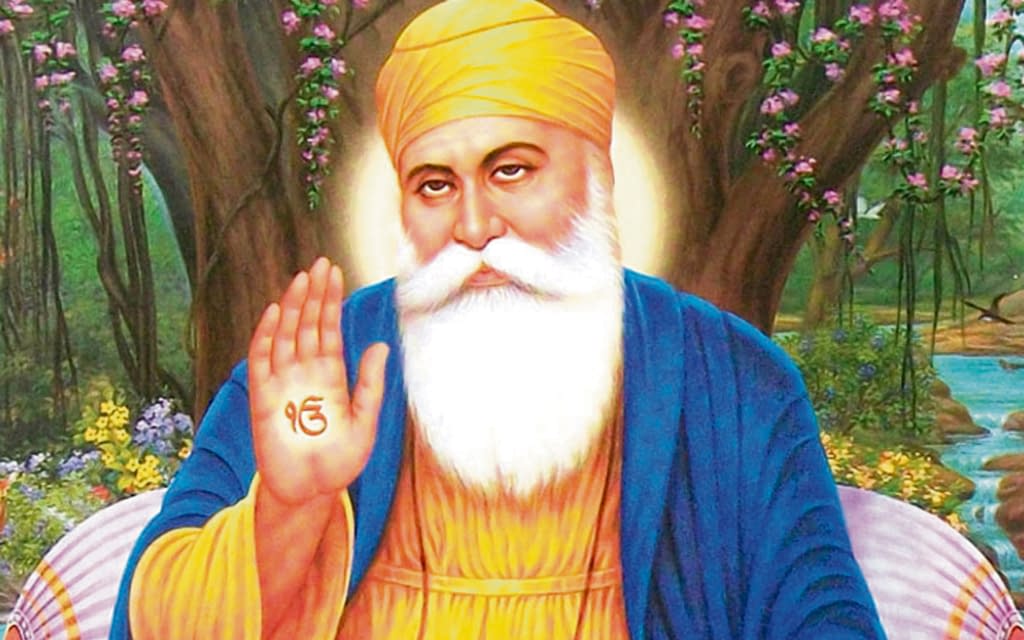“There is no Hindu, there is no Musalman,” preached Guru Nanak (15 April 1469 – 22 September 1539), the founder of Sikhism, who accepted for himself the status of a teacher but not a prophet. He referred himself as the slave or servant of God.
During the period of 200 years from Nanak’s proclamation of faith (AD 1499) and the tenth and the last Guru Govind Singh’s founding of the Khalsa Panth (AD 1699) a clear transformation can be seen: during the first hundred years, the first five Gurus pronounced the new social order and the religion was to be acceptable to both the Hindus and Muslims; it was to be monotheistic, non-idolatrous, and free of meaningless form and rituals. There was no caste discrimination and untouchability since the Brahmins and the untouchables broke bread as members of the same family.
“The second period of a hundred years saw the development of traditions which supplemented this social order,” notes Khushwant Singh in “A History of the Sikhs.”
“The sixth Guru was the first to appeal to arms; the tenth put the army on a regular footing.” This phase had its martyrs and heroes, a vast majority of Punjabi Hindus joining in large numbers and Hindu resistance against the onslaught of Islam. That stimulated the Punjabi nationalism.
The correct date of birth of the Guru is April 15, 1469, but his birthday is celebrated world-wide on the full moon night of the month of November i.e. Kartik Purnima. He was born to Mehta Kalian Das Bedi and Mata Tripta, both Hindus belonged to the merchant caste, in village Talwandi Rai Bhoe, now named Nankana Sahib, about 40 miles from Lahore in Pakistan. For some time he served as an accountant with the Nawab Daulat Khan Lodhi. There he met a Muslim minstrel, Mardana who joined him singing hymns at night in the town. He had his first mystic experience when he went to the river for early morning bath.
The Guru spent some years travelling in Punjab, paying visits to the Sufi establishment at Pakpattan. His next tour was southwards Tamil Nadu and Ceylon, Malabar, Konkan, Bombay and Rajasthan. The third tour was in the Himalayan region as far as Ladakh. And the last journey was his pilgrimage to Mecca and Medina! He also visited Baghdad and spent some time with the local fakirs. People would ask him whether he was a Muslim or a Hindu. He took the Muslim Mardana as his companion on two of his long journeys. On the others he was accompanied by Hindus of the lesser castes.
Before Guru Nanak died on September 22, 1539, he spent his last years at Kartarpur. Large crowds would flock to hear him preach. They came to be known as Sikhs, derived from Sanskrit Sisya, disciple, or Siksa, instruction – Pali, Sikkha i.e. disciples. One of the disciples, Lehana, a Khatri of the Trehan sub-caste, impressed Nanak by his devotion and qualities of leadership. The Guru chose Lehana to carry on his mission, giving the name Angad (of my own limb).
Guru Angad (1504-52) was followed by Guru Amar Das (1479-1574), Guru Ram Das (1534-81) and Guru Arjun Singh (1563-1606), respectively. Next five Gurus are Guru Hargobind (1595-1644), Guru Har Rai (1630-61), Guru Hari Krishen (1656-64), Guru Tegh Bahadur (1621-75) and Guru Gobind Singh (1666-1708). From the time of Guru Arjun Singh the Mughal emperors started interfering in religious matters, arresting the Gurus, killing them and their children.
Guru Arjun conceived the central place of worship for the Sikhs and Sri Harmandir Sahib (Golden Temple), the temple of Hari (God) at Amritsar. The Granth Sahib, the holy volume, was formally installed in Sri Harmandir Sahib. Govind Singh decided to give up the Guru tradition and even abolish the institution of masands which became a fertile cause of disruption in the community. The Guru Granth Sahib became the spiritual Guru. The Panj Piyare (five beloved ones) were to be the nucleus of a new community he would raise which was to be called the Khalsa, or the pure. Five emblems were prescribed for the Khalsa. Hair and beard unshorn (Kes), carry comb (Kangha), knee-length pair of breeches (Kach), a steel bracelet on right wrist (Kara) and armed with a sabre (Kirpan).
Raj Karega Khalsa (The Khalsa shall rule) was the slogan given by the last Guru while merging his entity in the Khalsa. The Guru’s life was saved at Machiwara by two Pathans he had known earlier but on October 7, 1708, the Guru was stabbed in the abdomen at Nanded by two young Pathans who entered his tent at the prayer time! The transformation of the Sikhs from a pacifist sect to a militant group called the Khalsa led by Govind Singh and the relationship of the Sikhs with the Mughals and the Afghans leading to consolidation of the Sikh power under Maharaja Ranjit Singh (13 November 1780 – 27 June 1839 ) during the eighteenth century makes an interesting study.
Next Column: The Accession of King Rama X in Thailand
(The writer is a Socio-political Historian. E-mail : haridesai@gmail.com )






